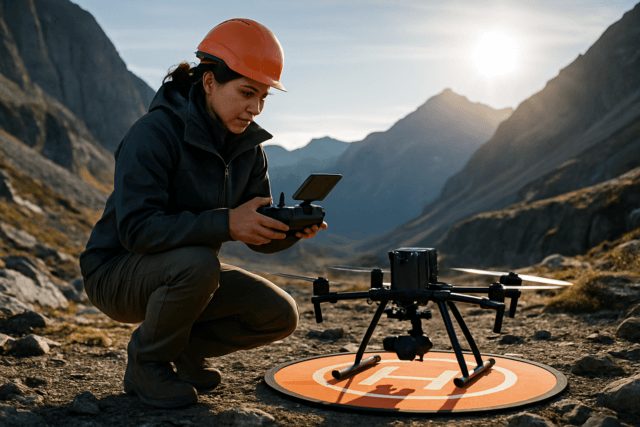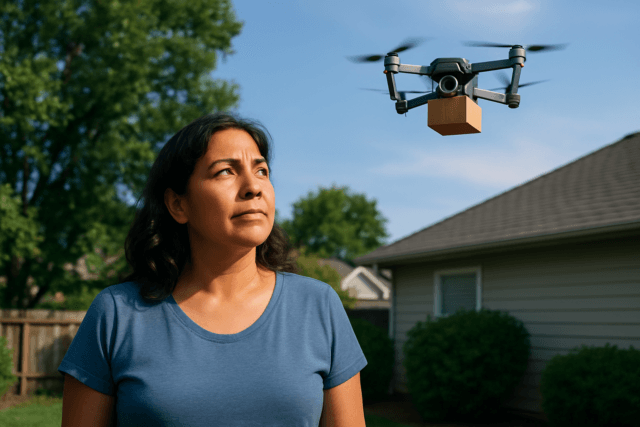In the high-stakes world of Search and Rescue (SAR), Unmanned Aerial Systems (UAS), commonly known as drones, have emerged as indispensable tools, offering a bird’s-eye view, rapid deployment, and access to otherwise unreachable areas. Equipped with high-resolution cameras, thermal imaging, and other advanced sensors, drones significantly enhance the efficiency and effectiveness of SAR operations, ultimately saving lives. However, the critical data and control signals these drones transmit are vulnerable, especially in contested environments where malicious actors may attempt to disrupt or compromise communications. Securing these communication links is not merely a technical challenge; it is a paramount necessity to ensure mission success and the safety of both responders and those being rescued.
Understanding Contested SAR Environments
A contested SAR environment refers to an operational area where intentional interference or adversarial actions threaten the reliable functioning of drone systems. These environments can be characterized by:
- Electronic Warfare (EW) Tactics: This includes jamming, where radio frequency (RF) signals are intentionally transmitted to interfere with a drone’s communication and navigation systems, potentially leading to loss of control, malfunction, or even crashes.
- Cyber Threats: Malicious actors may attempt to hack into drone systems, intercept data, or take unauthorized control (spoofing).
- GPS/GNSS-Denied Environments: Jamming or spoofing can render Global Positioning System (GPS) or Global Navigation Satellite System (GNSS) signals unreliable or useless, making navigation extremely difficult.
- Complex Electromagnetic Interference: Beyond intentional jamming, SAR operations may occur in areas with high levels of natural or man-made electromagnetic noise, further complicating stable communication.
In such environments, the effectiveness of drones hinges on robust, secure, and resilient communication capabilities, particularly for operations beyond visual line of sight (BVLOS).
Key Communication Vulnerabilities in Drones
Drones, as information and communication technology system (ICTS) devices, receive and transmit vast amounts of data, making each point of connection a potential target for compromise. Common vulnerabilities include:
- Open Wireless Channels: Many drones rely on open wireless communication, making them susceptible to interception and interference.
- Loss of Link (LoL): Environmental factors, distance, and interference can lead to a breakdown in communication between the drone and its ground control station (GCS), resulting in loss of control.
- Latency Issues: Delays in communication can hinder real-time decision-making, especially critical in rapidly evolving SAR scenarios.
- Limited Bandwidth and Power: Resource constraints on drones can limit the complexity of communication security protocols and the resilience of their links.
- Supply Chain Risks: Drones manufactured by foreign adversaries may contain vulnerabilities that allow unauthorized access to sensitive information.
- Software and Firmware Vulnerabilities: Exploitable flaws in a drone’s operating software or firmware can lead to data privacy risks, stolen data, or unauthorized control.
Best Practices for Securing Drone Communications
To mitigate these risks and ensure the integrity and reliability of drone operations in contested SAR environments, a multi-layered security approach is essential.
Encryption and Authentication Protocols
The cornerstone of secure drone communication lies in robust encryption and authentication.
- Strong Encryption: All data transmitted between the drone and the ground control station (GCS), as well as data stored onboard, must be encrypted. Protocols like Advanced Encryption Standard (AES-256) offer high-level security, while lightweight algorithms such as ChaCha20 are optimized for resource-constrained devices like drones. Secure protocols like TLS (Transport Layer Security) or SSH (Secure Shell) should be used for establishing secure communication channels, particularly for real-time data exchange and web-based interactions.
- Mutual Authentication: It is crucial to ensure that both the drone and the GCS can verify each other’s identity to prevent unauthorized access or control. Methods like multi-factor authentication, secure key agreement (e.g., using chaotic maps and Hash Chacha20), and Hash-based Message Authentication Code (HMAC) are vital for confirming trustworthiness and data accuracy. Digital signatures can further validate commands and data.
- Secure Key Management: Effective management of encryption keys is critical, ensuring they are stored separately from the encrypted data and regularly updated.
Anti-Jamming and Anti-Spoofing Techniques
Combating intentional interference requires specific technologies designed to maintain signal integrity.
- Spread Spectrum Techniques:
- Frequency Hopping Spread Spectrum (FHSS): Involves rapidly switching the carrier frequency of the drone’s communication signal across a wide band. This makes it challenging for jammers to follow and effectively disrupt the signal.
- Direct Sequence Spread Spectrum (DSSS): Spreads the signal over a wide frequency band using a pseudo-random code, making the signal appear as noise to jammers while the intended receiver can reconstruct it.
- Adaptive Filtering: These techniques help distinguish between legitimate signals and noise by continuously adjusting filter parameters to improve the desired signal and suppress interference.
- Beamforming: By using multiple antennas, beamforming can focus the drone’s signal transmission in a specific direction, enhancing signal strength, reducing the possibility of eavesdropping, and minimizing interference from other directions.
- GPS Anti-Jamming: Specialized systems use methods like spatial processing and adaptive cancellation to protect against GPS jamming and spoofing, ensuring reliable positioning data. Inertial Navigation Systems (INS) and dead reckoning, which rely on internal sensors like accelerometers, gyroscopes, and magnetometers, combined with sensor fusion and advanced algorithms, provide navigation capabilities in GPS-denied environments.
- Machine Learning Algorithms: Advanced anti-jamming systems can utilize machine learning to detect and respond to jamming attacks in real-time, learning from patterns to adapt and counteract new forms of interference.
Robust Network and System Security
Beyond communication links, the entire drone ecosystem must be secured.
- Secure by Design Principles: Prioritize UAS manufactured with security in mind to minimize cybersecurity vulnerabilities and protect data privacy from the outset. This includes assessing supply chain risks and understanding the security standards manufacturers are subject to.
- Zero Trust Architecture (ZT): Implement a Zero Trust model where all network access and transactions across UAS devices are continuously verified and authenticated, regardless of whether they are inside or outside the traditional network perimeter. This minimizes unauthorized access and shrinks the overall attack surface.
- Network Segmentation and Isolation: Isolate or segment drone networks from enterprise networks to prevent the spread of malware or breaches.
- Virtual Private Networks (VPNs): Maintain a secure connection with the UAS during flights using VPNs or other encryption methods to protect the confidentiality and integrity of communication pathways.
- Secure Firmware and Software: Ensure regular, secure firmware updates and disable any unused services to reduce attack surfaces. Review software user agreements and privacy policies to understand data handling practices.
- Strong Access Controls: Implement multi-factor authentication and strong, unique passwords for all organizational accounts and data related to drone operations. Role-based access control (RBAC) ensures only authorized personnel can access sensitive drone data.
- Local Data Mode (LDM): Utilize LDM to prevent UAS data from being transmitted or shared unnecessarily during flights, especially sensitive real-time data.
- Avoid Live Streaming Sensitive Data: Do not broadcast or live stream sensitive real-time data to the internet to prevent unauthorized acquisition by malicious actors.
- Contingency Planning:
- Pre-determined ‘Return to Home’ (RTH): Set a pre-determined RTH location to minimize GPS-related risks and ensure proper UAS recovery in case of communication loss.
- Redundant Communication Systems: Employing redundant communication links, such as satellite communication for BVLOS operations or mesh networks, can provide failover capabilities if primary links are compromised.
- Continuous Monitoring: Perform periodic log analysis and compliance checks to detect any anomalies across UAS data and accounts, enabling quick identification and response to potential security incidents.
Advanced Considerations for Resilient SAR Operations
In addition to foundational security measures, advanced strategies are emerging to further enhance resilience:
- Lightweight Cryptography: Given the resource constraints of many drones, research into lightweight cryptographic solutions designed for energy-efficient and secure UAV communication is crucial.
- Post-Quantum Cryptography: As quantum computing advances, the threat to current encryption standards grows. Integrating post-quantum algorithms into drone communication security frameworks is a forward-looking step.
- AI and Machine Learning for Threat Detection: AI can aid in processing vast amounts of data gathered by drones and help identify human forms, predict survivor locations, and detect unusual communication patterns indicative of jamming or cyberattacks.
Conclusion
The deployment of drones in Search and Rescue operations dramatically increases efficiency and saves lives, but it also introduces critical cybersecurity challenges, particularly in contested environments. By adopting a comprehensive, multi-layered approach to communication security—encompassing robust encryption and authentication, advanced anti-jamming and anti-spoofing technologies, and stringent network and system security protocols—SAR teams can fortify the digital lifeline that connects them to their aerial assets. Prioritizing these best practices ensures that drones remain a reliable and secure force multiplier, capable of operating effectively even under adversarial conditions, and continuing their vital role in humanitarian missions.





